Books
The Discovery of Dynamics
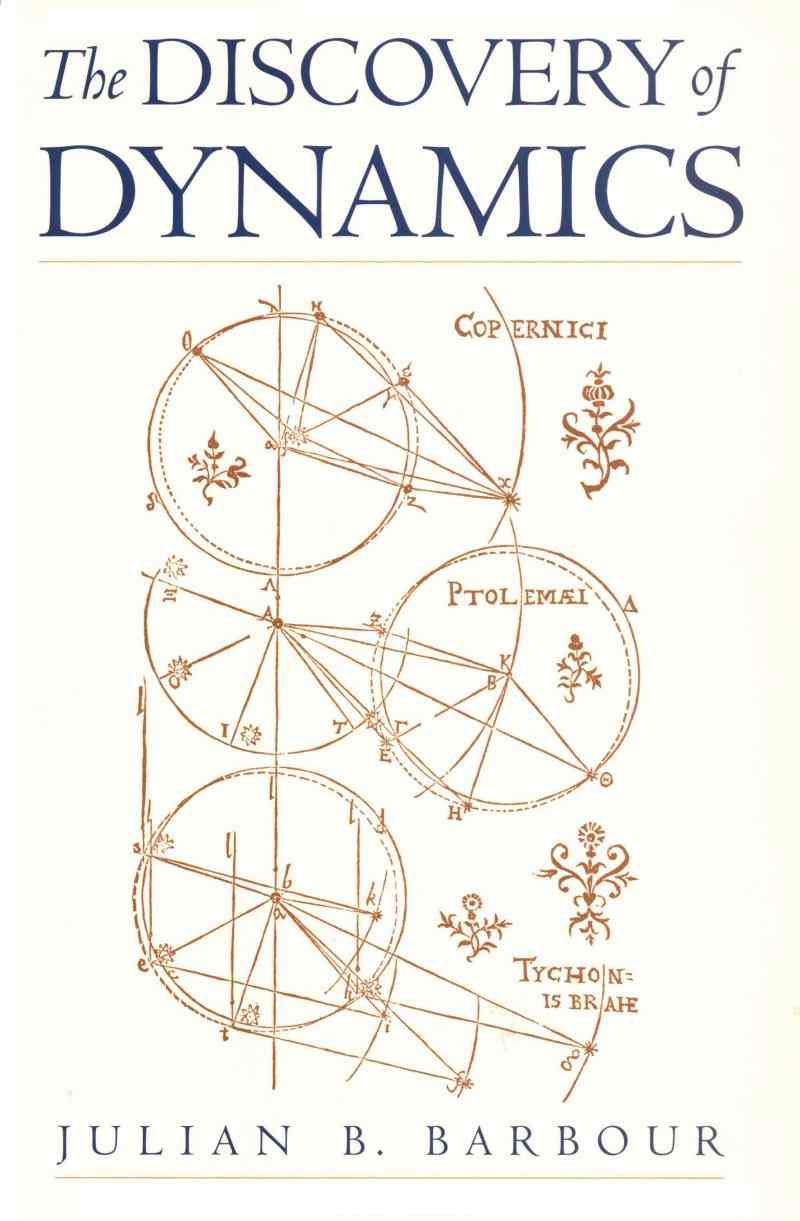
Published as a paperback by Oxford University Press (New York, 2001), this originally appeared as Volume 1 of Absolute or Relative Motion? (Cambridge University Press, 1989). I am currently writing the second volume, which will however be published as an independent book by Oxford University Press, New York. The provisional title is Mach's Principle, General Relativity, and Gauge Theory.
The Discovery of Dynamics is an historical study that covers the period from antiquity to the publication of Newtons’s Principia in 1687 together with conceptual clarification of Newtonian dynamics that occurred in the 19th century. Topics covered include ancient Greek astronomy, the Copernican revolution, the discovery of the laws of planetary motion by Kepler, the work of Galileo, and the important contributions of Descartes and Huygens. The central concern of the book is one of the perennial problems of physics and philosophy: is motion absolute or relative? My book shows how Newton came to introduce his most fundamental concepts – those of absolute space and time. It was through the criticism of these concepts by Ernst Mach above all that Einstein was stimulated into the creation of one of the supreme achievements of the human intellect: the general theory of relativity.
This book gave me a lot of pleasure in the writing.
The potential readers are those with an interest in the foundations of
dynamics and in historical and philosophical issues.
Mach's Principle: From Newton's Bucket to Quantum Gravity

From 1872 until his death in 1916, Ernst Mach (of the numbers) strenuously opposed Newton’s claim that the phenomenon of inertia proved the existence of an invisible framework – absolute space and time – of dynamics. He argued that bodies moving inertially do not follow straight lines in absolute space but move in a framework defined by all the masses in the universe. He postulated the existence of an unknown physical mechanism by which they control inertia. This daring idea is known as Mach’s Principle. It was the single greatest stimulus to Einstein in his creation of the general theory of relativity. However, the extent to which it is realised in general relativity is controversial. Mach’s Principle remains an open issue of great relevance to modern attempts to create a quantum theory of gravity and thereby reconcile Einstein’s theory of gravity with quantum mechanics.
In 1993, Herbert Pfister and I organised an international workshop on Mach’s Principle in Tübingen, Germany. Nearly all the leading physicists in the world who have worked on the issue attended, as did numerous philosophers and historians. The workshop proceedings were edited by Herbert and myself and include the contributed papers, transcripts of all the discussions, and editorial comments. The book has become a standard reference for Mach’s Principle. It was especially praised by one reviewer on account of the discussions, who asked: “When was the last conference proceedings volume that made good bedtime reading?”.
The End of Time
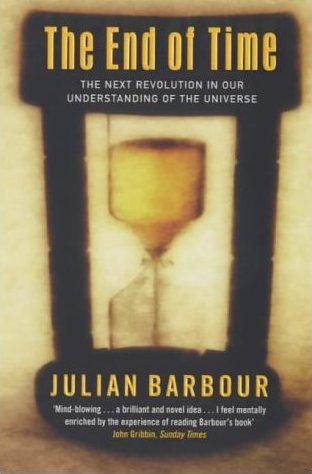
First published in hardback in 1999 by Weidenfeld and Nicolson, London, in the UK and by Oxford University Press, New York. Both paperback editions are still in print. There is also an Italian translation.
In The End of Time, which is written both for the popular-science market and for scientists and philosophers, I argue that the apparent passage of time is an illusion. If we could stand outside the universe and ‘see it as it is’, it would appear to be static. I arrive at this radical conclusion by considering the most basic structure of Einstein’s general theory of relativity and quantum mechanics. These are the two fundamental theories of physics, and both have been confirmed to exceptional accuracy within their respective domains of validity: large-scale phenomena for Einstein’s theory, microscopic phenomena for quantum mechanics. They have, however, remarkably different structures. In particular, time is treated in completely different ways in the two theories. This presents a severe problem, since all serious workers in the field are convinced that the two theories must eventually be subsumed in a single over-arching theory. This will be the quantum theory of the universe (also called quantum gravity). The finding of this theory presents many great difficulties, of which the ‘problem of time’ is perhaps the most severe. It seems that a choice has to be made between two irreconcilable notions of time. I argue that the only satisfactory solution is to abolish time altogether. I outline a timeless quantum theory of the universe. This includes a proposed solution to one of the most intractable problems of physics: what is the origin of the so-called arrow of time? Why is it that all phenomena distinguish a common direction of time (i.e., why does entropy increase?) but the equations of physics are symmetric with respect to the direction of time? The equations of physics allow not only the shattering of a cup that is dropped on the floor but also the re-assembly of the pieces. However, that is never observed. I believe that a theory of the universe should explain why entropy increases. In The End of Time, I suggest that a fundamental asymmetry in the space of all the possible structures of the universe could provide a basis for the arrow of time.
Reviewer comments
"The most interesting and provocative new idea about time to be proposed in many years. If true, it will change the way we see reality."—Lee Smolin
"Plato and Aristotle, if they had read The End of Time, would still be discussing it, because it deals with the greatest of all mysteries: how come existence?"—John Wheeler
The Association of American Publishers awarded its prize for excellence in the Physics and Astronomy section for the year 2000 to The End of Time.
Misprints
The most troublesome misprints in the initial hardback printings are in the final paragraph of p. 40, in which Figure 3 should be Figure 4, and line 7 of Box 9 on p. 132, in which it should be Bob*, not Bob. The last word but one on p. 342 should be stream, not steam. Finally, most entries in the Index referring to the Notes (from p. 336) give a page number that should be decreased by 1. These and other misprints are corrected in the paperback edition.
The Janus Point


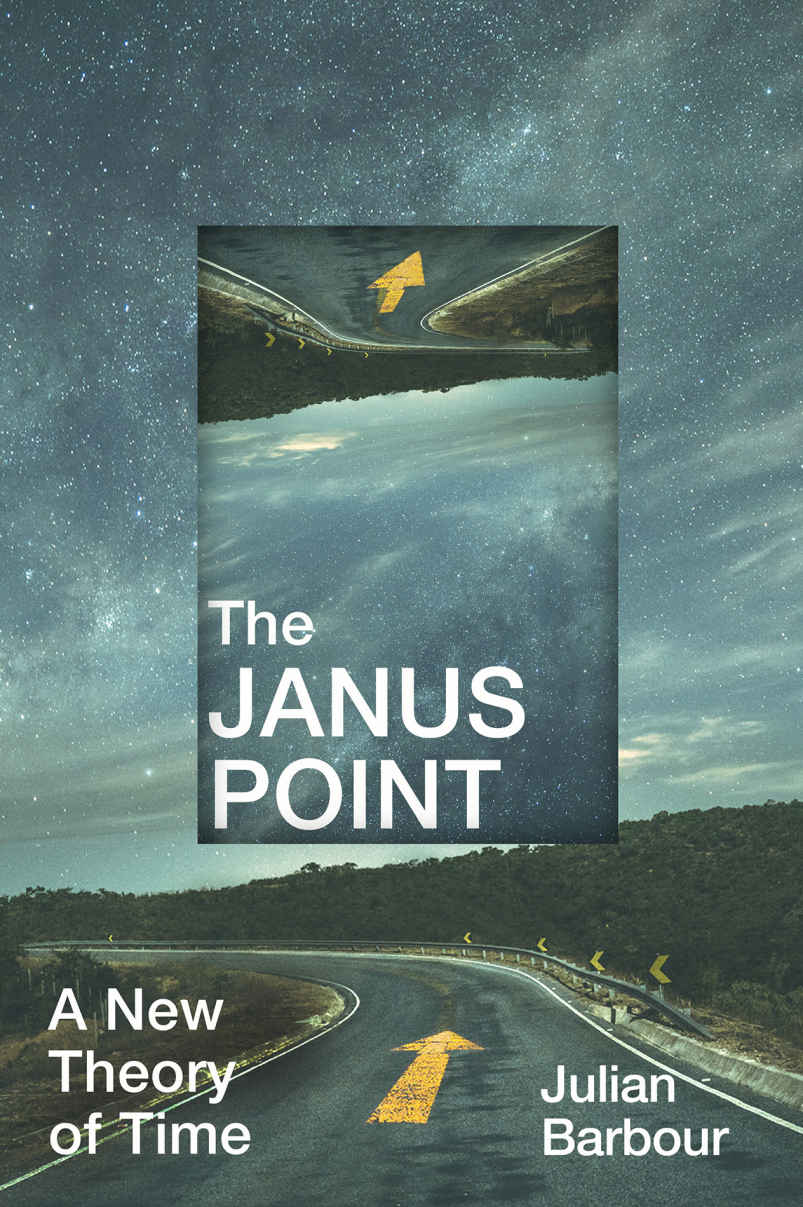
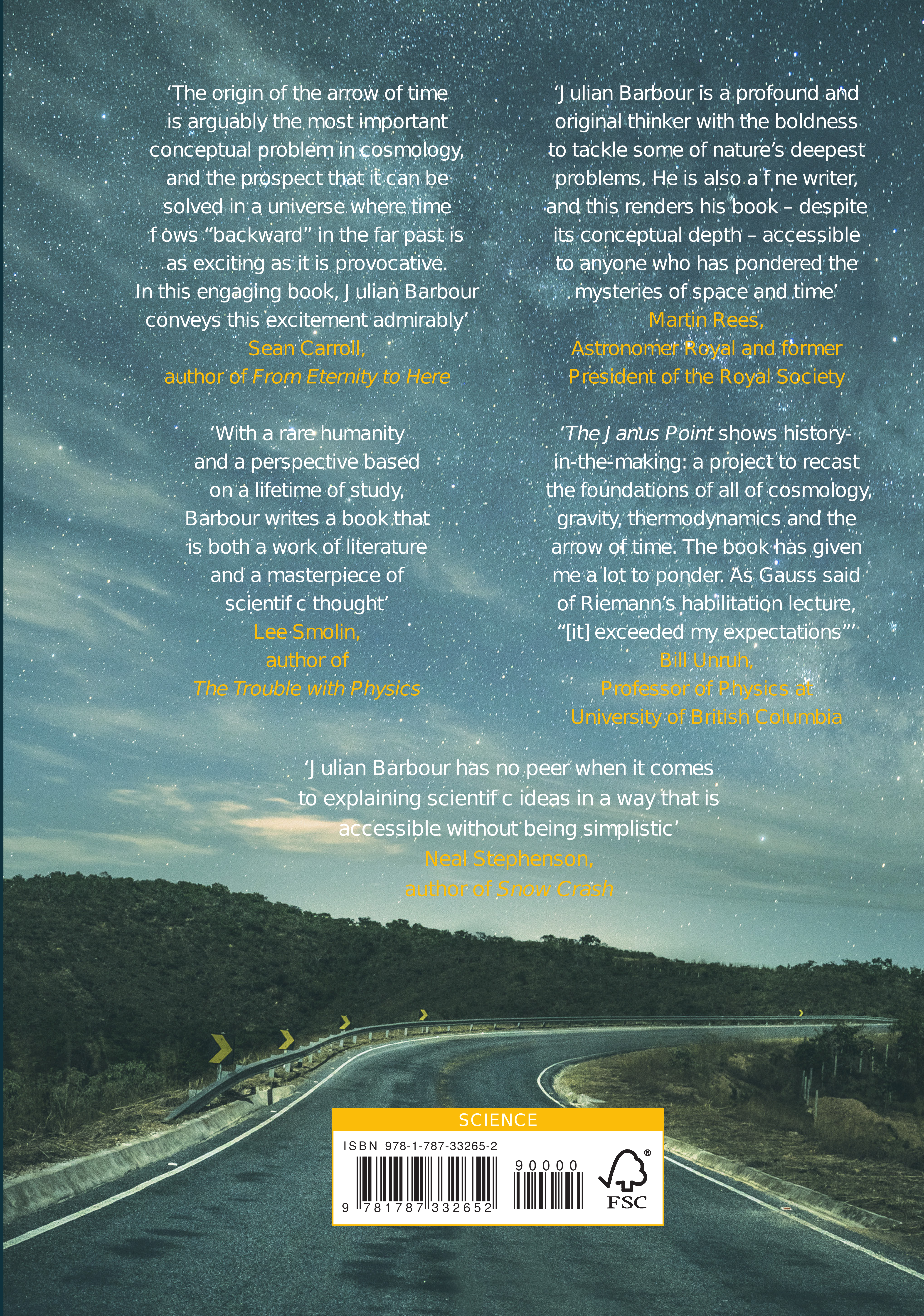
Published 2020 by Basic Books in the US and Bodley Head in the UK
Endorsements
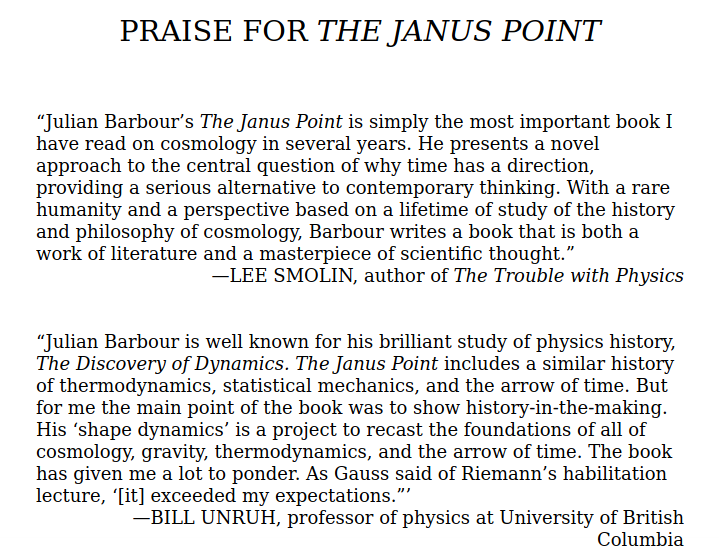
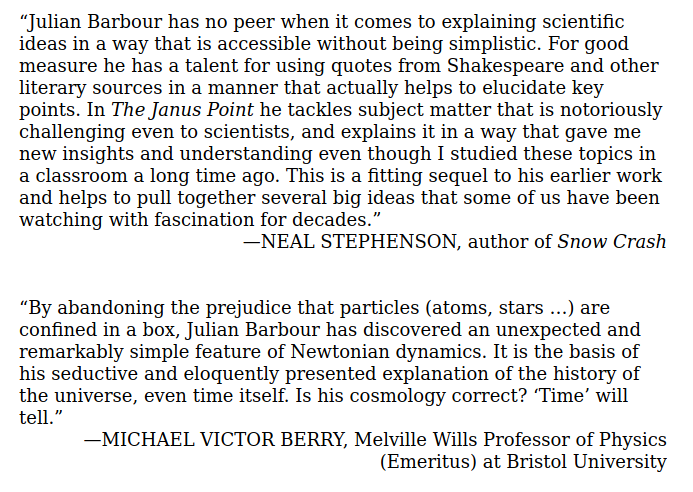
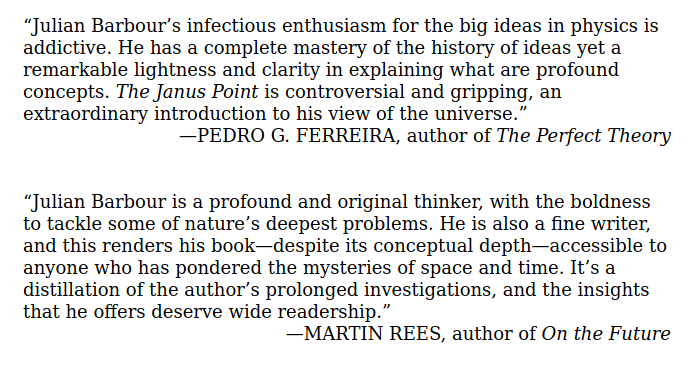
Since The Janus Point was published the idea suggested on p. 284 that complexity might literally be time has led to some remarkable developments that are discussed in my online talk at https://www.youtube.com/watch?v=vskzeQc9XpI.
Misprint(s)
In Fig. 7 on p. 123 the square-root sign on the left for the Newtonian infinitesimal action should be removed (but not on the right for the Machian case).
In the wave equation on shape space on p. 284 the shape potential should be replaced by its gradient in order to ensure clustering.